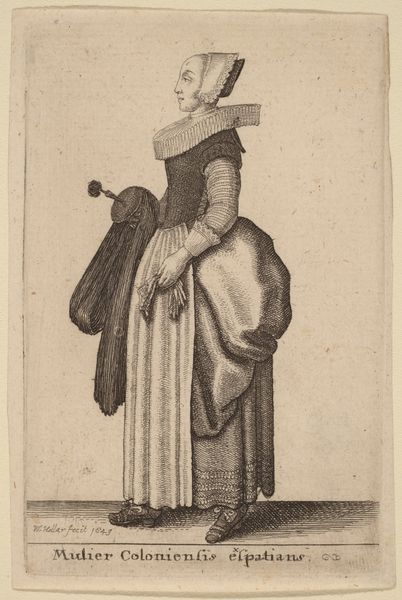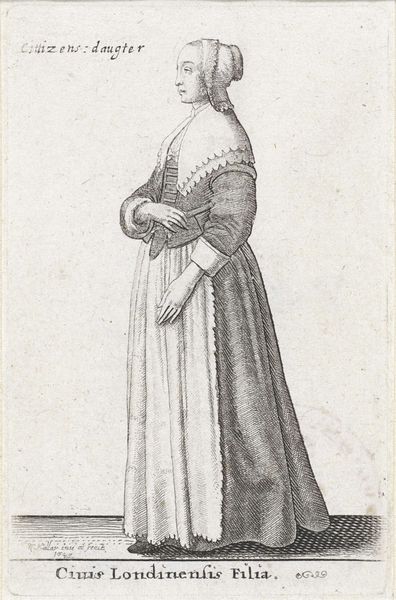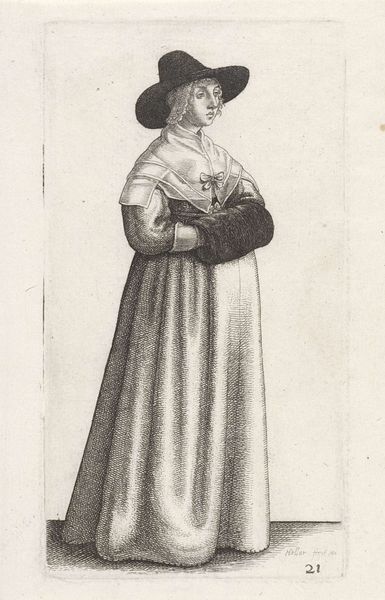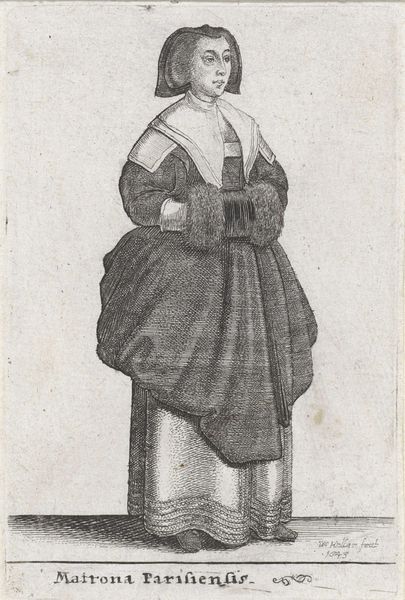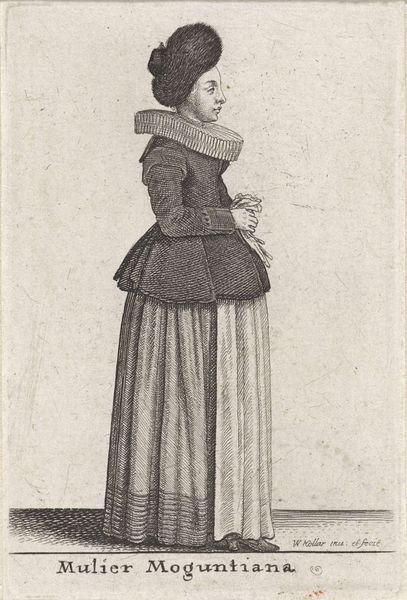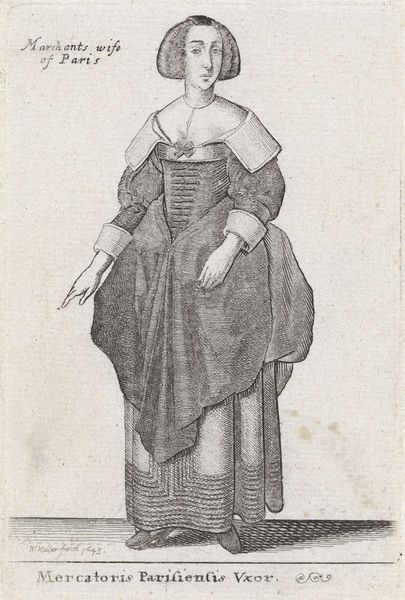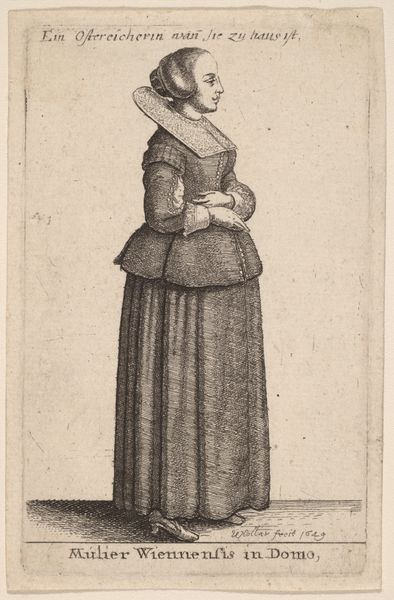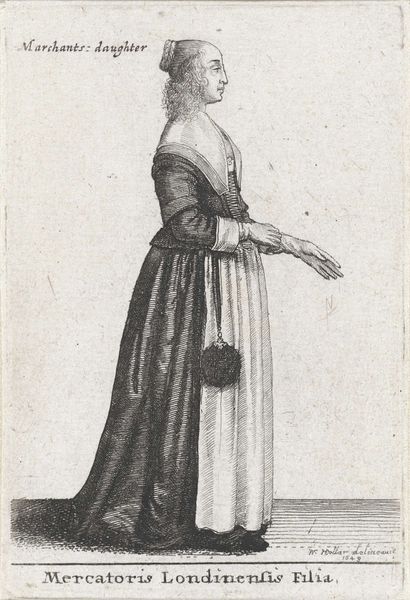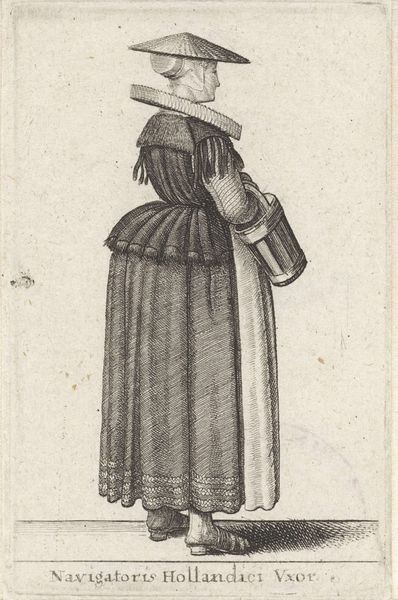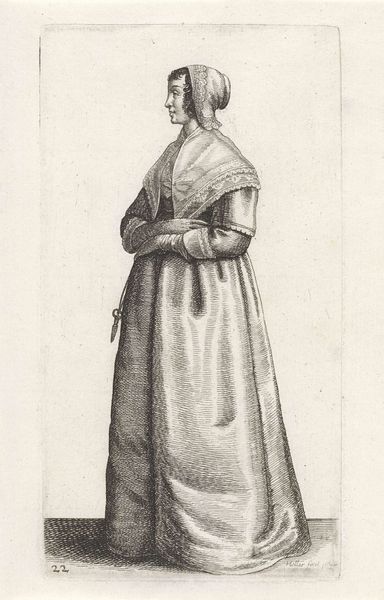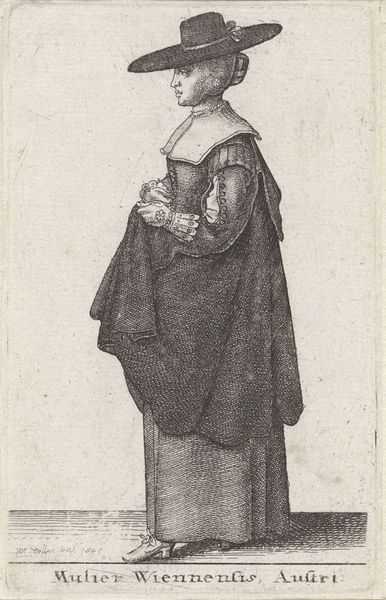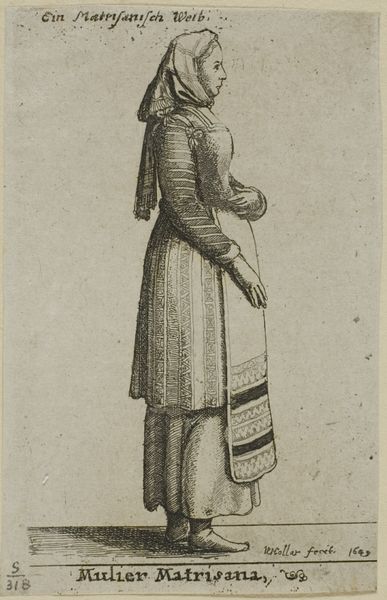
print, engraving
#
portrait
#
baroque
# print
#
old engraving style
#
figuration
#
genre-painting
#
engraving
Dimensions: height 91 mm, width 62 mm
Copyright: Rijks Museum: Open Domain
Editor: This is "Civis Coloniensis Filia," a 1643 engraving by Wenceslaus Hollar, currently held in the Rijksmuseum. I find the woman's attire so intriguing. How does this piece reflect the socio-cultural context of its time? Curator: It’s a very interesting choice for consideration. Hollar was creating these works during a period of significant social stratification and increasing merchant power. While the etching showcases the skill in printmaking during the baroque era, what I find more compelling is the almost anthropological element. Hollar is not simply depicting a woman, but visually categorizing her by her city and social standing through her attire. Editor: So, it's like a visual social register? A record of who's who through fashion? Curator: Precisely. Think of the "genre-painting" tag associated with this work; it's part of a larger artistic trend. Hollar created similar prints detailing varying ranks or citizen "types." The print itself is then consumed, reaffirming these social classifications in a growing public art market. It wasn't simply art for art's sake. These images served specific functions. Editor: Did people at the time read them that way, or is that a more contemporary reading? Curator: The intention, from what we can surmise based on social publications and other popular imagery of the time, was fairly direct. Think of the details, like the type of lace, the fabrics, and even the accessories: each communicated status, location, and profession to an informed audience. What's interesting to me is how these images might also serve an educational purpose or reinforce ideals around nationalism or regionality within cities. Editor: So this image says much more than initially meets the eye. I wouldn't have thought of it as a kind of early data visualization! Curator: Exactly. And that data visualizes power. Think about what the purpose of that kind of knowledge would be! I've learned a bit from your questions too, and your consideration for the role the consumer may take when viewing Hollar's "Civis Coloniensis Filia."
Comments
No comments
Be the first to comment and join the conversation on the ultimate creative platform.
